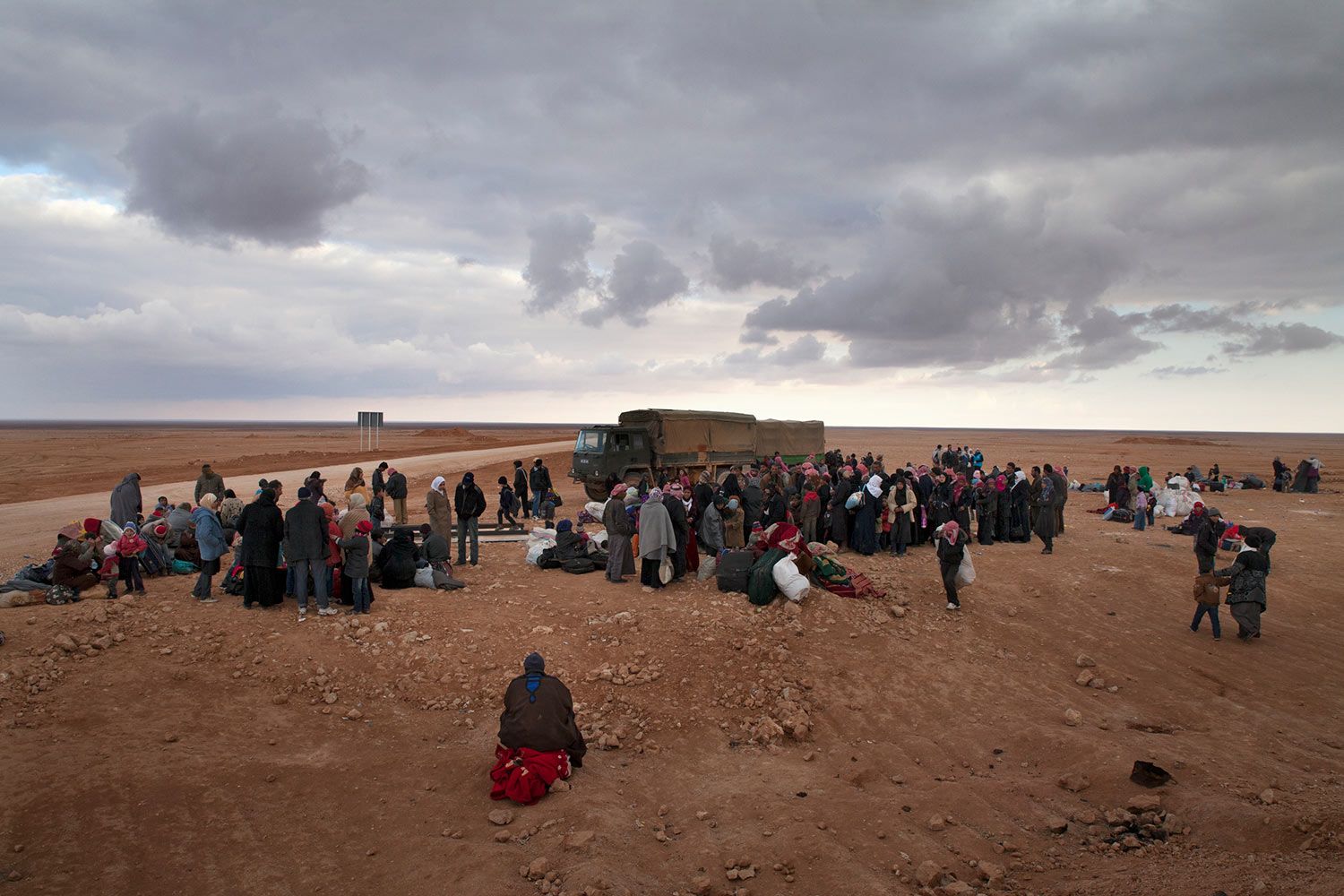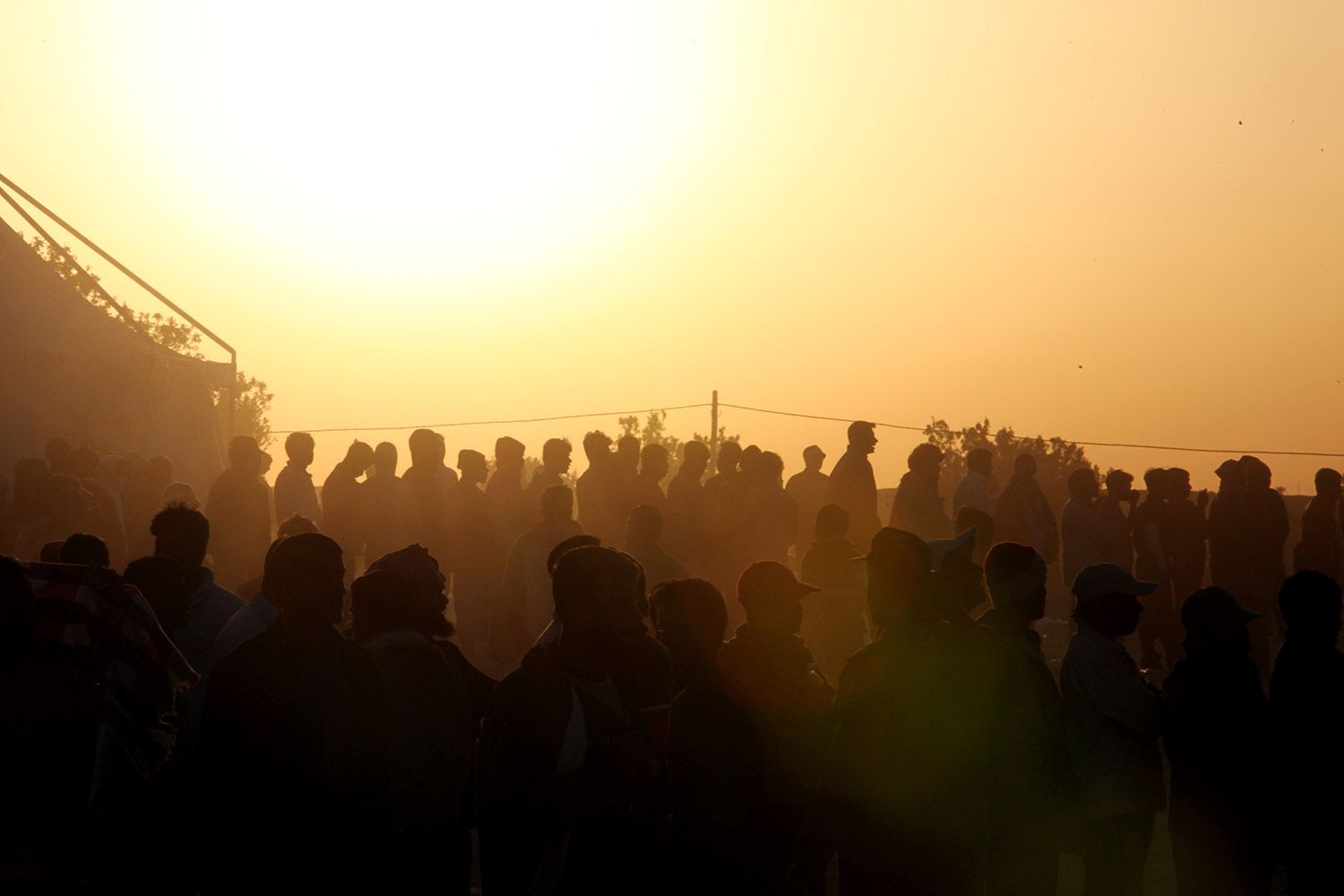This website does not support Internet Explorer, your current browser.
Please view the site with a modern browser such as Google Chrome or Mozilla Firefox.
Support to non-state armed groups
Case Illustrations
Support to non-state armed groups was used in both Syria and Libya to help prevent or respond to mass atrocities. Read the brief illustrations below to learn how this tool was used in these cases:
Syria (2011–present)

Refugees at the Syrian Border. —Lucian Perkins for US Holocaust Memorial Museum
The Syrian conflict began in 2011 after the violent suppression of protesters by the Assad regime. The ensuing civil war has seen the significant and persistent perpetration of mass atrocity crimes. In mid-2012, the United States, the United Kingdom, and France began to covertly provide non-lethal logistical and intelligence support to “appropriately vetted elements of the Syrian opposition and other appropriately vetted Syrian groups” (Messinger 2014), expanding to the provision of arms and military training in 2013. The United States initially provided nonlethal assistance to Syrian non-state armed groups through the Department of State (Blanchard and Belasco 2015, p. 5). Overt military assistance was approved in 2014, through the 2015 National Defense Authorization Act (P.L. 113-291). Congress approved the transfer of $500 million in assistance for training and equipping for vetted Syrian opposition forces, combatting both the Islamic State and the Syrian government (Blanchard and Belasco 2015). Running parallel was a $1 billion covert operation called Timber Sycamore spearheaded by the CIA, which was canceled in 2017 (Mazzetti et al. 2017). As of 2021, total foreign assistance to Syrian non-state armed groups was worth $2.54 billion (Security Assistance Monitor). Owing largely to Russia and Iran’s support to the Syrian government, it appears that the arming of Syrian rebel forces failed to achieve the goal of defeating the perpetrators or of mitigating mass atrocities in Syria.
Libya (2011)

As the sun sets, hundreds of refugees from Libya line up for food at a transit camp near the Tunisia-Libya border. March 6, 2011. —UN Photo/David Ohana
The Libyan conflict began in 2011 with a violent crackdown on protests against the Gaddafi regime. The regime committed atrocities against civilians in Libya’s east with hundreds killed or disappeared and heavy weapons and illegal weapons including cluster bombs used indiscriminately against civilian areas (HRW 2012). In March 2011, a US-led NATO coalition intervened to enforce the UN-mandated no-fly zone and prevent an imminent assault on Benghazi. France provided lethal military assistance to opposition rebels in June 2011, while the United Kingdom provided non-lethal assistance (Birnbaum 2011). The United States provided $25 million in non-lethal assistance to Libyan opposition groups throughout 2011 (Blanchard 2011, p. 8). The United States also secretly approved the provision of arms and funding to Libyan rebels by Qatar and the UAE in the spring of 2011 (Risen et al. 2012). Together with the NATO intervention, the provision of external assistance to Libyan rebels appears to have helped the Libyan opposition overthrow the Gaddafi regime, which it did in October 2011. The longer-term effects are less clear, with continued instability and human rights abuses in Libya.
